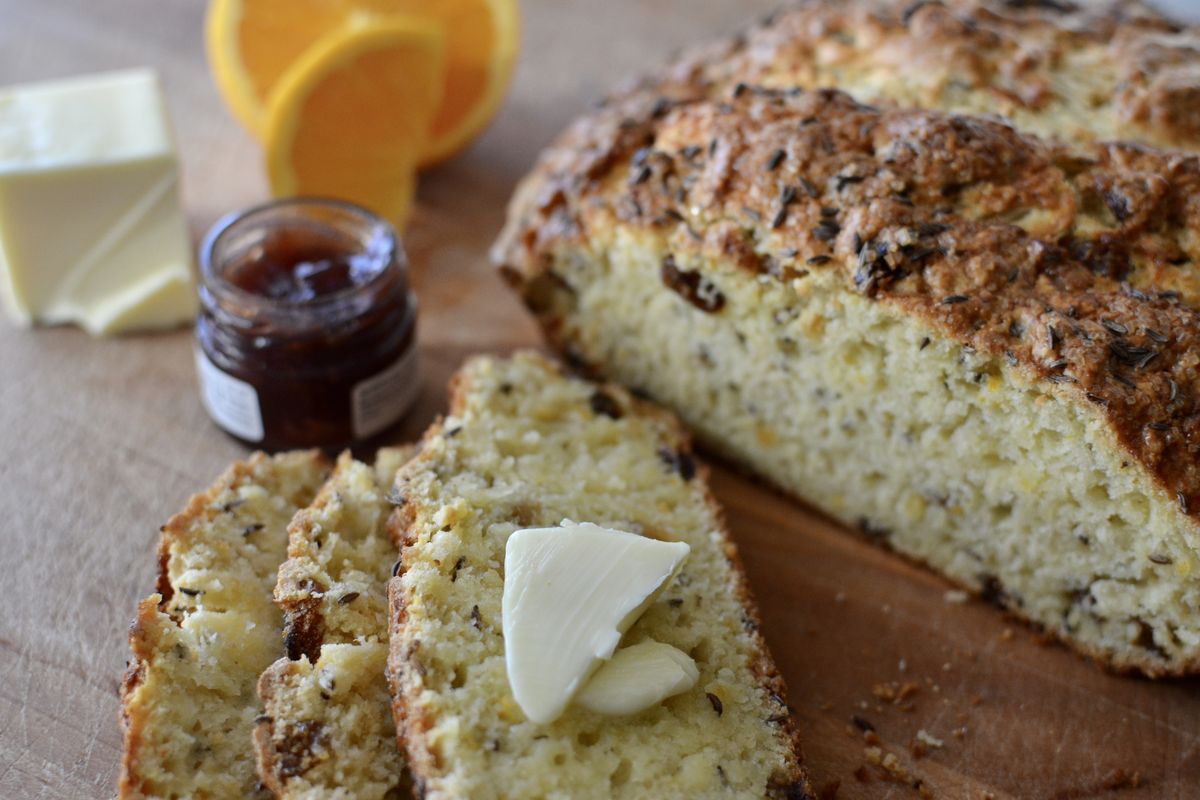In the Kitchen With Ricky: Slice, serve and enjoy Irish soda bread

Well, just as promised last week after my stout-braised corned beef recipe, here is a recipe for Irish soda bread. Irish soda bread, just like many traditionally celebrated foods, began out of necessity and helped lead the European country though some darker times.
In the mid 1800s, Ireland went through a great famine, and bread had to be made from the cheapest ingredients possible. The four basic ingredients are flour, salt, baking soda and buttermilk, and the combination of baking soda and buttermilk act as a leavening agent.
This was crucial since yeast wasn’t readily available to the vast population at that time. Today, all sorts of additions and inclusions are part of the soda bread, and almost no two recipes are alike. This recipe is a bit sweeter, as it contains a small amount of sugar to help keep the soda bread moist and make it a wonderful breakfast addition with a cup of tea or coffee.
If you’re in Ireland and your soda bread recipe contains more than the four ingredients mentioned above, then it is considered a tea cake. Feel free to get creative and hydrate the raisins in another liquid; I’ve used Irish whiskey, and it is wonderful. It’s not uncommon for soda breads to contain oatmeal, whole grains, nuts or herbs for more savory versions.
The shape of the loaf is traditional, as well. In North Ireland, the loaves are divided into four pieces before baking, and each of those triangles are cooked on a flat griddle. In the South, a cross is cut into the top of the bread. This was done for superstitious reasons. People believed that cutting the cross would let the trickster fairies (otherwise known as leprechauns) out and help ward off evil, ultimately protecting family and home.
Whether using it to sop up a stew or slicing it open and slathering it with butter for breakfast or a snack, Irish soda breads are a great addition to the table any time of year. It really is best to wait to cut into the loaf when it has completely cooled after baking it; however, if you can’t wait (I understand), just know that it will crumble a bit when cutting into it.
I serve this soda bread with Irish butter and jam or preserves. It is equally delicious with slices of Irish cheddar, but if all you have is regular butter and American cheddar, those will work just fine. If you still have some left after a day or two, try it sliced and toasted.
Irish Soda Bread
For the dough:
2½ cups unbleached, all-purpose flour
⅓ cup granulated sugar
1 teaspoon baking powder
1 teaspoon kosher salt
¾ teaspoon baking soda
5 tablespoons cold unsalted butter, cubed
1 cup golden raisins, rehydrated in the juice from the orange
Zest from 1 orange
½ teaspoon vanilla extract
1 tablespoon caraway seeds (optional)
1¼ cups buttermilk
1 large egg, slightly beaten
For the topping:
Egg wash
Raw or turbinado sugar
Flake sea salt
Additional caraway seeds, if desired
Zest and juice the orange, setting the zest aside. Heat the juice until steaming and add in the raisins, covering to hydrate.
Whisk together the flour, sugar, baking powder, salt and baking soda. Cut in the butter and mix it very thoroughly with your hands until mealy.
Stir in the hydrated and cooled raisins, vanilla, zest and caraway seeds, if using. In a small bowl, combine the egg and buttermilk with a fork, then add it to the flour mixture.
Stir until well moistened, and place the dough into a fridge for about 30 minutes.
Preheat an oven to 325 degrees.
Generously butter a metal or aluminum pie plate. Remove the dough from the fridge and dump it out onto a lightly floured surface.
Shape the dough into a smooth round and place it into the prepared pan. Brush the top with the egg wash and sprinkle with the sugar, salt and caraway (if using).
Cut a cross into the top of the loaf with a small, sharp knife. Bake for 45 minutes, testing with a toothpick for doneness.
The loaf is done when the toothpick comes out clean from the center. Cool in the pan for 5 minutes, then transfer to a wire rack and cool completely.
Yield: one loaf (6 to 10 servings)
Local award-winning chef and Rind and Wheat owner Ricky Webster can be reached at ricky@rindandwheat.com. Follow Webster on Instagram @rickycaker.